Anthropology
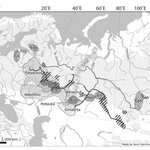
The Uralic language family and languages such as Finnish, Estonian, Saami and Hungarian began to spread west approximately 4,200–3,900 years ago, first to the central Volga region and later to the Baltic Sea and North Atlantic.
The Uralic language family is a few hundred years younger than the Indo-European one, and its spread led to contacts with Indo-Iranian language variants and the creation of a long contact zone in the area currently known as central Russia. Early loan words originating from this contact made their way into the Uralic languages that were beginning to emerge, including…

Though activists will highlight mass shootings as a gun problem rather than a criminal act, as in a Sacramento, California shooting a few days ago, legal California gun ownership has had an inverse relationship to crime and deaths. More guns than ever are owned but there are fewer gun deaths per capita.
The state thinks it can reduce that farther and two obvious avenues for restrictions are people on psychiatric medication for severe conditions and people that those who know them say are prone to violence. Yet an analysis of data shows that California’s gun violence restraining order (GVRO)…
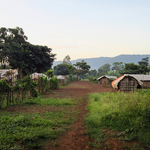
The transition from hunter-gatherers to farmers and ranchers remains a subject of debate. In Europe, where that happened thousands of years ago, based largely on genetic studies, the prevailing view is that the "Neolithic transition" occurred mainly by population replacement rather than cultural change.
The old stuck to old ways, much like organic farmers and believers in alternative medicine do, while the young embraced progress as the elders died off.
A new study of peoples living in the highlands of southwest Ethiopia, where the transition to agriculture is still underway thousands…
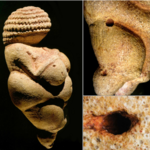
One of the most important examples of early art in Europe, a 11 cm high figurine colloquially dubbed a 'Venus' and found in Willendorf, Austria, is made of a rock called "oolite" which is not found in or around Willendorf.
New high-resolution tomographic images lead the authors to concluse the material from which the Venus was carved likely comes from northern Italy or possible eastern Ukraine, which sheds new light on the mobility of the first modern humans south and north of the Alps.
While other Venus figures are usually made of ivory or bone, sometimes also of…

Women in sexual relationships with men whom they perceive as having more fragile masculine ideas change their own behavior to protect the feelings of the men. They reported more faked orgasms and lower sexual satisfaction the more they reported their partner’s sense of masculinity as fragile.
Unlike more surveys, these new studies examine the subject from the perspective of women who seek to protect their partners’ sense of masculinity, perhaps at their own expense.
In one study that collected data from 283 women, researchers found that the more women perceived their partner’s manhood…
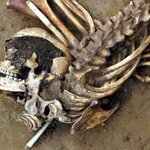
People in Britain, from Scotland to Wales, may maintain a cultural identity, but how much of it is real versus an arbitrary social construct? How much should be decided by genes versus how people choose to identify?
A new study opens up as many questions as it answers about Bronze Age Britain. Where did many of them 'come from'? Inference suggests France.
The work analyzed the DNA from the remains of 793 individuals, directly radiocarbon dating 123 individuals with genome-wide data to between 1300-800 B.C., from the Middle to Late Bronze Age and found large-scale migration into southern…
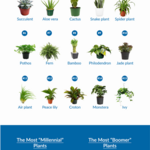
A survey of 1,111 Americans who own houseplants wanted to find out which varieties are most popular and how much people spend on the hobby, but they also found out how much they anthropomorphize their leafy little friends.
During the pandemic, 68 percent of Millennials took up a new hobby and nearly as many grew their houseplant collection.
Perhaps that's become part of the new cultural dynamic. 57 said having a houseplant supported their mental health while 81 percent say houseplants are a reasonable substitute if they are far from nature.
And many want partners who share those…

A demographically representative sample of 5,000 single adults between the ages of 18 and 98 finds a big switch in a post-pandemic world; only 78 percent believe being physically attractive is most important, compared to 90 percent in 2020.
And marriage is back. The number of singles who want a partner desiring marriage jumped from 58
percent
two years ago to 76
percent
this year, with men and younger adults leading in the change. Now, 42 percent of men are ready to find a long-term romantic relationship while women are just at 29 percent.
Not this year, men are leading the…

Anti-vaccine sentiment is not new but from the 1950s until the late 1990s it was isolated small pockets of deniers. With claims that MMR vaccines, and then preservatives in vaccines, caused autism, the west coast of America became overrun with vaccine denial. In 2021, anti-vaccine sentiment switched to middle America with COVID-19.
The names change but health disinformation remains the same, as are ways to combat it. A recent study looked at combating typhoid misinformation in Sierra Leone and found that explicitly addressing falsehoods seems more effective in busting misbeliefs than…

A new paper reaffirms how humankind's embrace of agriculture, and resulting lower 'cost' of food, led to a cultural boom that resulted in mass migration and many of the world's major language families.
If you speak modern Japanese, Korean, Turkish and Mongolian, you have a connection to neolithic millet farmers from the Liao River valley - Inner Mongolia and the provinces of Liaoning and Jilin in China. People speaking nearly 100 dialects and languages across 5,000 miles have a shared genetic ancestry stretching back 9,000 years, the research found.
And farming is the reason. Millet was an…